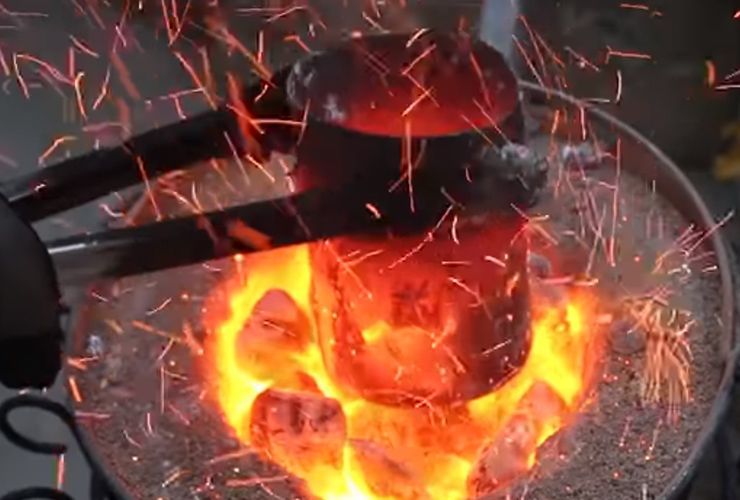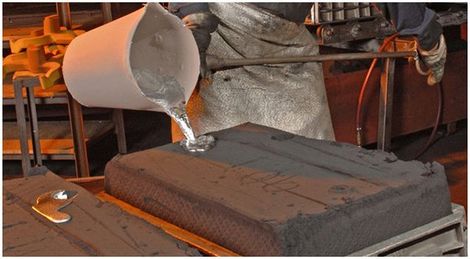Comprehending Metal Casting Procedures: Innovations and Patterns in the Foundry Industry
The foundry market is experiencing substantial changes driven by technological innovations. Innovations such as 3D printing and synthetic intelligence are reshaping steel casting processes, boosting effectiveness and precision. Sustainable practices are acquiring grip, emphasizing the relevance of ecological duty. In enhancement, the intro of sophisticated materials and automation is boosting overall casting top quality. These developments recommend a crucial change in the sector, elevating questions concerning future instructions and ramifications for makers.
Innovations in 3D Printing for Metal Casting
Recent developments in 3D printing innovation have actually considerably transformed the landscape of steel casting. The integration of additive manufacturing strategies has actually enabled the quick production of facility patterns and molds that were difficult or previously hard to achieve with standard approaches. By utilizing products such as sand and metal powders, producers can create elaborate geometries that enhance design flexibility and reduce material waste. This advancement not only expedites the prototyping process yet additionally enables the modification of parts tailored to particular applications.
3D printing promotes much shorter lead times, which is important in markets requiring quick turnaround for parts. The innovation additionally supports the manufacturing of light-weight structures, thus boosting power performance in end products. Consequently, the foundry sector is seeing a change in the direction of more sustainable methods, driven by the performance and precision supplied by these modern-day 3D printing methods in metal casting processes.
The Function of Expert System in Precision Manufacturing
As markets increasingly take on innovative production technologies, expert system (AI) is playing a pivotal duty in boosting precision manufacturing procedures. AI formulas assess substantial datasets to identify patterns and maximize production criteria, causing boosted precision and effectiveness. In metal casting, AI help in predictive upkeep, minimizing downtime by projecting devices failings before they occur.
AI-driven simulations enable producers to design the casting process, refining layouts and reducing defects. Artificial intelligence strategies boost quality assurance by finding anomalies in real-time, therefore ensuring that only items meeting stringent requirements proceed via the assembly line.

Sustainable Practices in the Foundry Market
Sustainability has actually become a crucial focus in the foundry sector, prompting producers to take on methods that reduce ecological impact while maintaining productivity - Aluminum Foundry. One popular method consists of the recycling of products, especially metals, which considerably lowers waste and energy intake. Foundries are significantly carrying out closed-loop systems, enabling the reuse of sand and various other casting materials, thus lessening the demand for virgin sources
In addition, energy-efficient technologies, such as electrical furnaces, are acquiring grip, as they reduced greenhouse gas emissions compared to typical techniques. In addition, numerous shops are discovering making use of naturally degradable binders and environmentally friendly coverings to reduce hazardous byproducts. Staff member training on lasting techniques has actually likewise become crucial, cultivating a society of get more info environmental duty within organizations. Overall, these sustainable techniques not only add to ecological conservation but additionally boost the long-term practicality of the foundry industry in an increasingly eco-conscious market.
Innovations in Materials for Boosted Casting High Quality
With the continual advancement of the foundry industry, advancements in products have actually come to be necessary for boosting casting quality. Advanced alloys and composite materials are increasingly being utilized to improve mechanical homes and decrease flaws in spreadings. These products typically offer superior strength-to-weight ratios and boosted resistance to deterioration and wear, attending to the needs of modern applications.
Furthermore, the consolidation of nanomaterials is getting grip, permitting finer microstructures that lead to boosted surface area finishes and dimensional accuracy. Metal Foundry. 3D printing innovations also contribute in generating complex geometries with marginal waste, enabling using specific products that were previously testing to cast
Furthermore, the development of eco friendly binders and ingredients adds to sustainable techniques while maintaining high-quality outcomes. Jointly, these advancements not only improve the performance of actors products yet additionally line up with the industry's change in the direction of sustainability and efficiency.
Automation and Robotics in Metal Casting Procedures
Automation and robotics are revolutionizing metal casting processes by enhancing operations and improving precision. In contemporary factories, robotic systems are used for tasks such as mold and mildew handling, putting, and ending up, substantially reducing human intervention. This not only minimizes the risk of mishaps yet additionally assures consistent high quality in production.
Automation modern technologies, such as computer system numerical control (CNC) machines, help with elaborate designs and complex geometries that were previously testing to attain. Real-time data analytics enable manufacturers to keep an eye on procedures and enhance efficiency continually.
Check The integration of automation causes raised performance and effectiveness, permitting foundries to fulfill growing market demands while reducing preparations. As the industry accepts these advancements, the labor force is also advancing, calling for brand-new abilities to operate and maintain innovative equipment. Generally, the adoption of automation and robotics is a crucial pattern shaping the future of steel casting procedures.
Frequently Asked Inquiries
What Is the History of Metal Casting Strategies?
Metal casting techniques day back to ancient worlds, with proof of bronze casting in Mesopotamia around 3000 BCE. Over centuries, methods evolved greatly, including innovations in materials and innovation, shaping modern-day industrial practices.
Just How Does Metal Casting Effect the Environment?
Metal casting considerably impacts the environment with energy usage, exhausts, and waste generation. Nevertheless, advancements in sustainable practices and modern technologies intend to mitigate these results, promoting more ecologically friendly techniques within the sector.
What Security Measures Are Important in Shops?

What Are Common Problems in Metal Casting Products?
Common flaws in metal casting products consist of porosity, contraction, misruns, cold shuts, and surface area imperfections. These issues occur from factors such as inappropriate temperature level control, insufficient mold and mildew design, and contamination throughout the casting process.
How Do Foundries Ensure Quality Control in Casting Processes?
Shops implement rigorous quality assurance measures through regular evaluations, standardized testing, process tracking, and adherence to sector requirements. These practices assist identify flaws early, guaranteeing the honesty and integrity of the final casting items.
Advancements such as 3D printing and man-made intelligence are reshaping steel casting processes, improving effectiveness and precision. Current developments in 3D printing innovation have actually considerably changed the landscape of steel casting. Automation and robotics are changing metal casting processes by enhancing and improving operations precision. Metal casting methods date back to ancient human beings, with proof of bronze casting in Mesopotamia around 3000 BCE. Usual issues in steel casting items consist of porosity, shrinkage, misruns, chilly shuts, and surface area flaws.